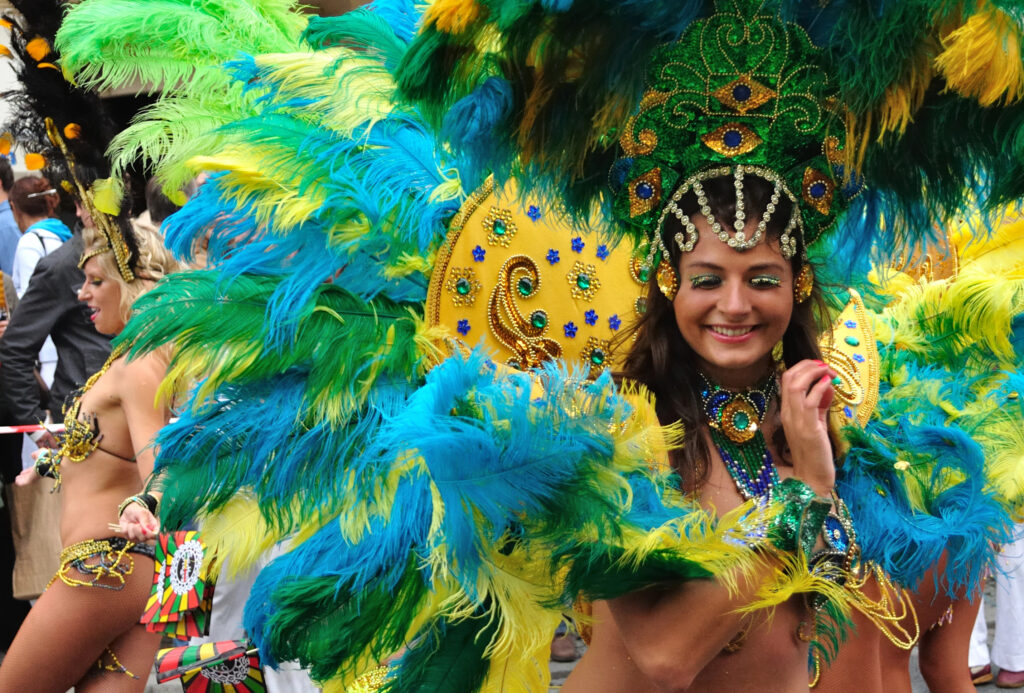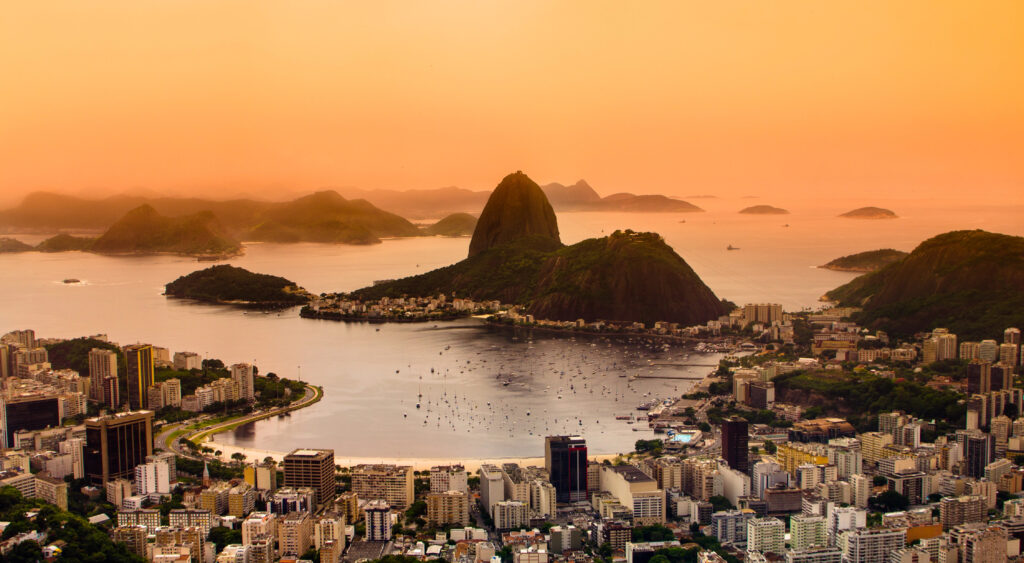Feathers, Floats, and Festivities: A Colorful Tale of the Carnival Festival in Brazil.
Are you on the search for the worlds biggest party? We’ve been to a lot of events and festivals around the world, but nothing beats the colorful vibes of Brazil in the Spring time.. Grab your dancing shoes and get ready for a journey into the heart of one of the biggest bashes on the planet – Carnival in Brazil!
Get Ready to Party at the Infamous Carnival in Brazil
Carnival is where tradition meets wild creativity, and the streets come alive with the spirit of celebration. From the lively blocos (street parties) to the Sambadrome parades, Carnival is a unlike any other party on earth, and everyone’s invited to join in on the fun.
But, Carnival is more than just a spectacle; it’s a phenomenon that pulses through the veins of Brazil. It’s a time when the whole country dances to the beat showcasing Brazilian heritage. Get ready to samba your way into the heart of Carnival, where the music never stops, and the fiesta is always in full swing.
History And Significance Carnival
Centuries ago, the roots of Carnival began with Portuguese settlers bringing their festive traditions to Brazil. Over time, these celebrations mingled with African and indigenous influences, creating a vibrant carnival culture. Fast forward to the 20th century, and Rio de Janeiro emerged as the Carnival capital, dazzling the world with its samba beats.
Now, fast forward to today! Carnival in Brazil is like the ultimate bash, pulling in millions of people. Streets come alive with blocos (that’s fancy for street parties), where you can dance your hearts out all night long. But the real showstopper? The sambadrome, where samba schools compete with skilled moves, beats, and outfits that scream, “Look at me, I’m fabulous!”
Carnival has evolved into a global phenomenon, blending tradition with modern flair. It’s a cultural explosion that brings people together in the spirit of joy and unity. Whether you’re in Brazil or joining the party from afar, Carnival is a celebration that knows no borders and invites everyone to join in the fun!
Carnival Traditions
Carnival in Brazil is a whirlwind of traditions, and at its beating heart is the rhythm of Samba dance and music. The Samba schools in Brazil aren’t your typical classrooms; they’re groups that bring the magic to Carnival. Each school is a community, showcasing not just dance and music skills, but also creativity and whole lot of teamwork.
Samba schools compete to be the crème de la crème, pouring their hearts into creating the most spectacular performances att the chance to earn their title of Carnival champions.
When the festival hits full swing, it’s time for the grand spectacle – the parades and competitions. Picture massive floats adorned with decorations, and Samba school members, dressed to the nines, moving in perfect harmony. These parades tell stories through dance, costumes, and choreography.
Samba dance and music, along with the incredible efforts of Samba schools, create a Carnival experience that’s like nowhere else on Earth.
Costumes and Masks
When Brazilians say “elaborate and colorful,” they mean business. Carnival costumes are ridiculous– think sequins, feathers, and an explosion of colors. Whether it’s a samba dancer’s outfit or a parade float costume, the goal is simple: dazzle and shine. It’s a fashion show on steroids, where more is definitely more.
Beyond just the flashy outfits, traditional masks play a role in the Carnival festival, each with its own meaning. Take the “Bate-Bola” masks, for example – these disguises originated in Bahia and often depict characters from European folklore. Then there’s the “Caboclo” mask, representing the blending of indigenous and European cultures. These masks carry cultural stories and symbolize the countries heritage, and has now influenced the magic of Carnival in Venice, Italy, as well.
Most importantly to remember, the beauty of Carnival costumes and masks lies not just in their visual appeal but in the stories they tell. Be sure to join in on the fun to make your own legendary stories.
Street Parties (Blocos)
Street parties, better known during Carnival as “blocos,” are the heartbeat of the festiva, where the spirit of joy takes center stage. Seriously, who doesn’t love a good street party? Imagine gatherings where the streets transform into a sea of people, each bloco with its own vibe. The beauty of blocos lies in their spontaneity – you might stumble upon a lively procession just around the corner, making each moment a surprise.
Now, let’s talk about the popular blocos and their themes, added a dash of magic to the Carnival revelry. Take “Cordão do Bola Preta” in Rio de Janeiro, one of the oldest and largest blocos, known for its traditional black and white attire. In Salvador, “Olodum” stands out with its Afro-Brazilian beats and cultural themes. “Galo da Madrugada” in Recife holds the title of the largest bloco globally, attracting thousands with its music and massive floats.
Blocos cater to every taste, ensuring that the Carnival experience is an inclusive celebration for everyone on the streets of Brazil.
Carnival Dates and Planning
The Carnival season is filled with anticipation, preparations, and festivities. Here’s a glimpse into the planning and the best times to soak in the Carnival magic across different cities.
Leading up to Carnival, there’s an air of excitement as preparations kick into high gear. Samba schools dive into rehearsals, costume makers work tirelessly to craft colorful outfits , and the streets buzz with anticipation, building up the energy for the celebration. While the exact dates change each year, Carnival typically takes place in the weeks leading up to Lent, usually in February or March. The official celebrations start on Friday and continue until Ash Wednesday.
As for experiencing Carnival in different cities, each has its style and flavor, depending on what kind of experience you are looking for. Rio de Janeiro steals the spotlight with its world-famous parades at the Sambadrome. Salvador boasts a street carnival, where blocos (street parties) take center stage. Or, if you’re looking for a mix of tradition while also enjoying the beach, Olinda and Recife offer a fantastic Carnival experience.
Carnival Today
Today, modern influences and adaptations have added new dimensions to Carnival. While the heartbeat of samba still remains strong , you’ll also find yourself grooving to a mix of music genres, from funk to electronic beats.
Beyond Brazil’s borders, Carnival has gained global recognition, becoming a magnet for tourists seeking the ultimate party. Cities like Rio de Janeiro and Salvador transform into international hubs of revelry, drawing people from all corners of the globe. The impact on tourism is undeniable, as Carnival’s spirit spreads its contagious joy far beyond Brazilian shores.
From the samba beats to the dazzling costumes, Carnival is a feast for the senses. But here’s the thing: the world is brimming with more festivals, each with its unique magic waiting to be explored. Let’s turn the page to your next trip! Imagine dancing through the streets of Rio, savoring flavors, and creating memories that last a lifetime. With Adventures by Matt, your next festival escapade is just a click away. Embrace the rhythm of the world, experience new traditions, and let the festivities continue.




Leave a Reply